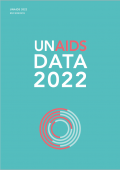What's New
Displaying results 161 - 170 of 4915

Resource | Fact Sheets,
HIV country profiles are based on data reported by countries which are published as part of UNAIDS' Data Book. HIV country profiles provide an overview of the latest available data on the HIV epidemic and response in the countries from 2022.

Resource | Fact Sheets,
HIV country profiles are based on data reported by countries which are published as part of UNAIDS' Data Book. HIV country profiles provide an overview of the latest available data on the HIV epidemic and response in the countries from 2022.
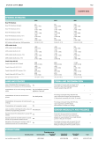
Resource | Fact Sheets,
HIV country profiles are based on data reported by countries which are published as part of UNAIDS' Data Book. HIV country profiles provide an overview of the latest available data on the HIV epidemic and response in the countries from 2022.
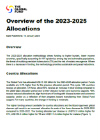
Resource | Publications,
Overview:
The 2023-2025 allocation methodology drives funding to higher burden, lower income countries, specifically accounting for HIV epidemics among key and vulnerable populations, the threat of multidrug-resistant tuberculosis (TB) and the risk of malaria resurgence. Where there is a decrease in funding, the methodology provides sustainable and paced reductions.
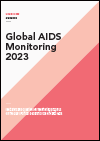
Resource | Publications,
The indicators and questions in this document are designed for use by national AIDS programmes and partners to assess the state of a country’s HIV and AIDS response, and to measure progress towards achieving national HIV targets. Countries are encouraged to integrate these indicators and questions into their ongoing monitoring efforts and to report comprehensive national data through the Global AIDS Monitoring (GAM) process. In this way they will contribute to improving understanding of the global response to the HIV epidemic, including progress that has been made towards achieving the commitments and global targets set out in the new United Nations Political Declaration on HIV and AIDS: Ending Inequalities and Getting on Track to End AIDS by 2030, adopted in June 2021, and the linked Sustainable Development Goals.
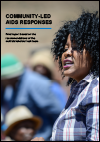
Resource | Publications,
From 2020 to 2022, representatives of governments, civil society organizations and donors jointly deliberated on definitions and recommendations for scaling up and reporting on community-led AIDS responses and community-led organizations engaged in the AIDS response. This final report on community-led AIDS responses based on the recommendations from the Multistakeholder Task Team on community-led AIDS responses documents this work and the resulting recommendations.
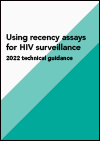
Resource | Publications,
Recency assays use one or more biomarkers to identify whether HIV infection in a person is recent (usually within a year or less) or longstanding. Recency assays have been used to estimate incidence in representative cross-sectional surveys and in epidemiological studies to better understand the patterns and distributions of new and longstanding HIV infections.
This technical guidance outlines best practices regarding the appropriate use of HIV recency assays for surveillance purposes and updates 2011 technical guidance from the World Health Organization (WHO) and the Joint United Nations Programme on HIV/AIDS (UNAIDS) on the use of HIV recency assays.
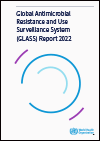
Resource | Publications,
This report marks the end of the early implementation phase of GLASS. In addition to presenting data collected through the latest data call, this report provides a summary of five years of national AMR surveillance data contributed to GLASS from its initiation, presents AMR findings in the context of progress of country participation in GLASS and in global AMR surveillance coverage and laboratory quality assurance systems at (sub)national level.
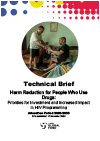
Resource | Publications,
This brief is meant to help applicants to the Global Fund plan for and scale up effective HIV and hepatitis C programming for people who use drugs, particularly those who inject. Applicants should consult the Global Fund HIV Information Note and Modular Framework Handbook, which detail the full range of biomedical, behavioral and structural interventions that the Global Fund supports as part of a comprehensive HIV response. This brief, drawing on review of past programming and guidance from UN partners, highlights specific lessons and recommendations for harm reduction programming. Closing the HIV prevention gap for key populations, including people who inject drugs, is a priority in the Global Fund’s 2023-2028 strategy. Removing human rights-related barriers to services, and ensuring that community leadership is at the heart of the HIV response, are also strategic priorities.






